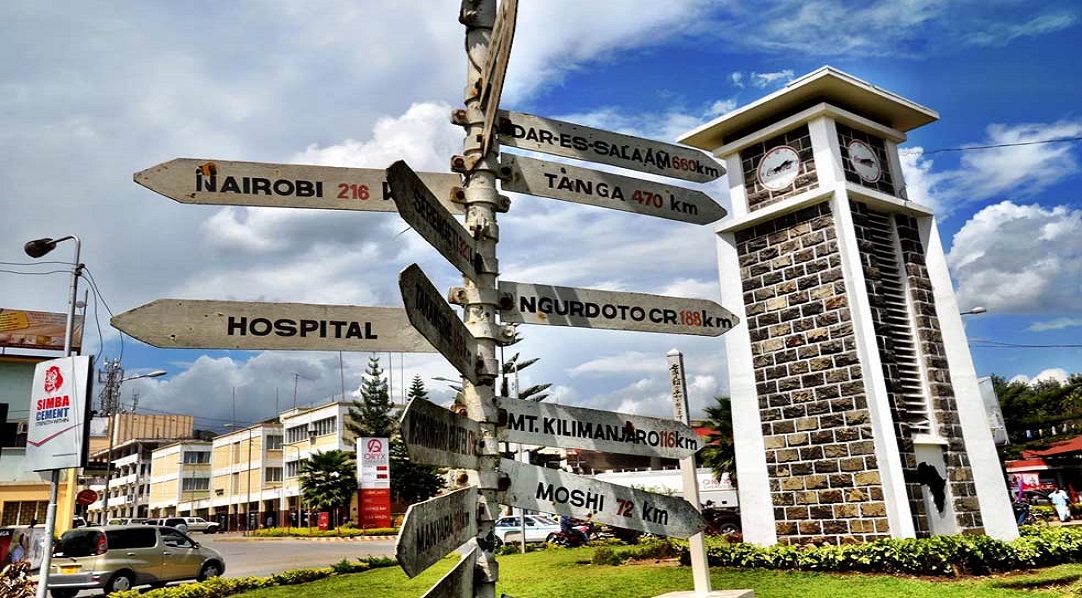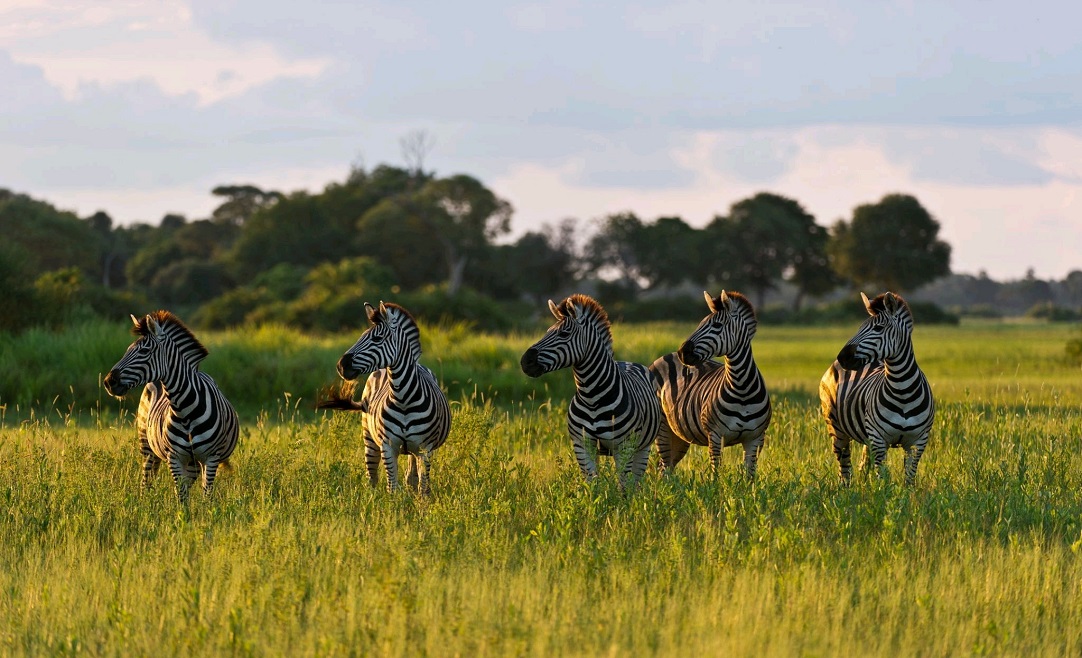
28 September 2022
ARUSHA NATIONAL PARK DESTINATIONS AND SAFARI TOUR PACKAGES
Arusha National Park is the one of prominent Tanzania National Parks located in the North-eastern Tanzania with 137 km2. Arusha National Park is about 2:30 hours (60km) distance from Kilimanjaro. Arusha National Park is located in the Arusha region and it is where Mount Meru is located with an elevation of 4566 m/14980.315 ft. above the sea level. Arusha National Park is varied and located in different distinct landforms (landscapes) in just three (3) parts of it. Arusha National Park is diverted that,
• To the west, Meru Crater channels the Jekukumia River; the peak of Mount Meru stands on its edge.
• Ngurdoto Crater in the southeast there is Grassland.
• The shallow alkaline Momella Lakes of the NE have various colors of algae and are known for their waders.
Arusha is a region in Tanzania, it is located in the north of the country and borders with the country of Kenya. The Arusha region borders the Kilimanjaro region to the east, the Manyara and Singida regions to the south, and the Mara and Simiyu regions to the west. The Arusha region is located in the Ngorongoro Conservation Area, which is a UNESCO World Heritage Site.
The Arusha region is a major tourist destination in Africa and the center of the safari circuit in northern Tanzania. Tanzanian national parks and reserves in this region include the Ngorongoro Conservation Area, Arusha National Park, Loliondo Game Control Area and Lake Manyara National Park. The remains of 600-year-old stone structures are in Engaruka, just off the road between Mto wa Mbu and Lake Natron. Arusha is one of the most developed regions of Tanzania.
WILDLIFE IN ARUSHA NATIONAL PARK
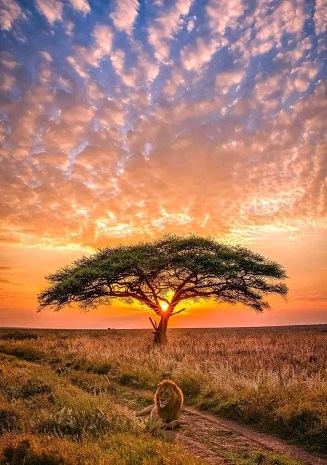
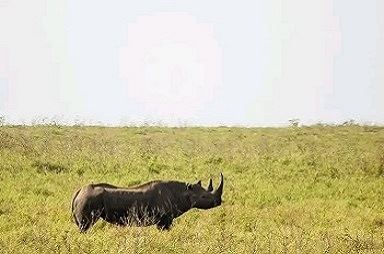
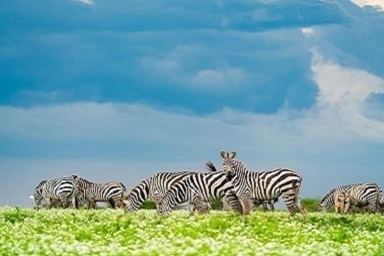
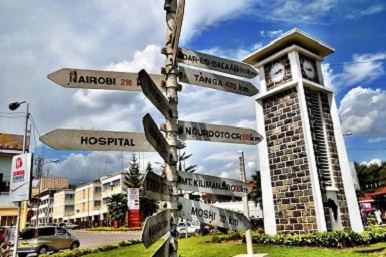
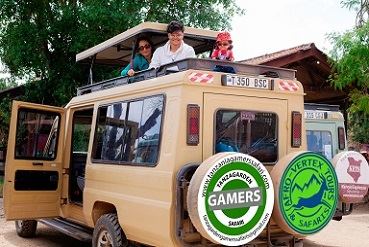
In Tanzania, the different Safari National Parks like Arusha National Park, Tarangire National Park, Lake Manyara National Park, Serengeti National Park, and Ngorongoro Crater are having each with its uniqueness in terms of Wildlife flora and fauna. However, some animals and plants are the same in the all-Tanzania National Parks.
Arusha National Park comprises the varieties of both flora and fauna that is animals, birds and different species of plants. Arusha National Park is also called “Serengeti Ndogo” as it contains many varieties of animals in large number like buffaloes, warthogs’ zebras, waterbucks, giraffes.
Animals found: giraffe, Cape buffalo, zebra, warthog, the black-and-white colobus monkey, the blue monkey, flamingo, elephant, bushbuck, Leopard but rarely seen in Arusha National Park. Lion and rhino are absent in the Arusha National Park.
Birds found: African fish eagle, African olive pigeon, Augur buzzard, Bar-tailed trogon, Bearded vulture, Black saw-wing, Cinnamon-chested bee-eater, Egyptian goose, Great crested grebe, Hartlaub's turaco (NE), Little grebe, Narina trogon, Peregrine falcon, Red-fronted parrot, Scaly francolin, Silvery-cheeked hornbill, Southern pochard, Tawny eagle and Verreaux’s eagle.
Plants found: Fig-Tree and many others.
ARUSHA CITY DAY TOURS
The Arusha City is located in the northern part of Tanzania. The Arusha City is a hub from which most other tours depart, particularly Tanzania safari tours. It lies on a plateau in the Great Rift Valley between Serengeti, Ngorongoro Conservation Area, Lake Manyara, Tarangire and Mount Kilimanjaro. Arusha is a small village near Mount Meru overlooking Mount Kilimanjaro. The town of Arusha is mostly safe therefore encourages the tend to be the most visited by tourists as it is the gateway to the Circuit North Safari to the Serengeti National Park, Ngorongoro Crater, Lake Manyara National Park, Tarangire National Park and Arusha National Park. The closest park to this Arusha city is Arusha National Park.
VISIT COFFEE PLANTATIONS
The “Aroma of Arusha” Tanzania’s Oldest Coffee Plantation located at the foothills of Mount Meru. It is a bit distance from Arusha Town to the area of specialization where a huge coffee plantation is located. The Coffee plantation in Arusha was started during the Germany colonization in Tanzania. The Coffee Plantation about One hundred acres covers the property of Elewana Collection, owner of numerous luxury lodges and camps in Tanzania and Kenya. Different travelers experience Elewana Coffee in each year and enjoy it during the coffee tour.
On the coffee farm, Arabica is growing due to the presence of its favorable conditions and grows best on high altitude (1400m above sea level) with a lot of rain.
OTHER ARUSHA NATIONAL PARK RELATED DESTINATIONS & TOURS
Including Ngurdoto Crater, Lake Duluti, Momella Lakes, Lake Longil, Tululusia Hill and Waterfalls, Fig Tree Arch, Walking Safari Tour, Hourseback Riding, Ngarenanyuki River (Engare Nanyokie), Canoeing Safaris, Bike Cycling Tour, Bird Watching and "the Uwanja wa Mbogo" (Buffalos Glade)
NGURDOTO CRATER - Arusha National Park
This is a volcanic crater located in the Arusha National Park with 3.6 km (2.2 mi) its diameter and its wideness and 100 meters (110 yd) deep along with Ngorongoro, Empakaai, Maasai and Olmoti. Ngurdoto Crater is surrounded by Forest called “Ngurdoto Forest” which is a home of different species of plants, birds and animals such as Elephant, Buffalo, Black and White Colobus monkey.
The Ngurdoto Crater is shaped like Ngorongoro crater miniature. It comprises of five main viewing point such as Rhino in the southern rim, Mikindu also in the southern rim, The rock in the southern rim, Buffalo (southern rim), The glades in the northern rim, Leitong in the northern rim. The Ngurdoto Crater comprises of wide space in it so that any other tours such as Walking Safaris may be done, therefore it is easier to do a walking Safari in the Ngurdoto Crater.
LAKE DULUTI - Arusha National Park
This is a small lake nature from volcanic formation in Meru district, Arusha region, Tanzania. Lake Duluti is located in Tengeru around Mount Meru just like 14km from Arusha city Centre, found on the eastern edge of the eastern branch of the Great Rift Valley. The depth is estimated it is 700 meters , 1 km long and around 600 meters wide, 63 hectares (160 acres)
Lake Duluti crater contains water mainly from rainfall and groundwater that seeps into it. Lake Duluti is surrounded by the dense Forests which are hilly located, therefore Lake Duluti crater walls of the crater – up to 200m high – are mostly covered in a thick forest.
The deepest part of the lake in the middle is about 9 m deep; The shallow parts are on the shore of the lake where the depth varies from side to side. A path off the Arusha-Moshi Road leads to a restaurant on the north shore of the lake where canoes can be hired.
Lake Duluti Crater is a home of different organisms including animals such as green mamba, lizards. Birds such as grey herons, fish eagles, cormorants, ospreys, egrets and kingfishers. Different fish species are living in the Lake Duluti.
Activities which may be done in the Lake Duluti Crater are like Canoeing for exploration of the lake for a different perspective, Walking and Hiking around the Crater Lake a short hike of Forest surrounding the Lake Duluti Crater in which a small path leads through the forest, providing enough shade for you to walk even during the hottest part of the day. In the hike trail you will be able to discover different species of plants, birds and animals, also you will be able to spot Mount Kilimanjaro and Mount Meru to give you experience and nature. Hikers are accompanied by a ranger from the Duluti Forest Preserve and the hike around the lake can take up to 2 hours.
The Entrance fees of Lake Duluti may start from $20 - $40 including the rent for the canoeing boat.
Lake Duluti is approximately 30 minutes east of Arusha Town and 2 HOURS Approximately from Moshi Town.
MOMELLA LAKES - Arusha National Park
The Momella Lakes or Momela Lakes are seven shallow lakes in Arusha National Park namely: Big Momela, Small Momela, ElKekhotoito, Kusare, Rishateni, Lekandiro and Tulusia. The entrance to the park is in Village Momella, Meru District in Arusha Region, Tanzania. Lakes are the covers the eastern portion of Arusha National Park, covering the forest of Mount Meru. The lakes are alkaline and are formed from volcanic debris formed during the Mount Meru explosion about 250,000 years ago. The lakes are alkaline, animals do not drink from their waters, but you can see zebras and birds on their banks. The Momella Lakes are largely fed from under-ground streams and are not very deep. Because of their different in mineral contents each lake supports a different type of algae growth and this gives each lake a different color.
The Momella Lakes are the habitats for different aquatic birds both resident and migrant. Birds involved are as pink flamingos, the lesser pink flamingos, pelicans, Egyptian geese, guinea fowls, African fish eagles, and African jacanas, also some animals are seen such as buffaloes and giraffes.
You can do the canoe safari, an experience; Canoes glide silently across the lake, allowing you to see the various species of animals found here up close; Also, from here on a clear day you can see Kilimanjaro on one side and Mount Meru on the other side.
LAKE LONGIL - Arusha National Park
This is a freshwater lake in the park where variety of animals gather to drink water and some aquatic bird species therefore it acts as a stopover point during the game drive.
Lake Longil is the only fresh water lake in the park, inhabited with Tilapia fish and also there are Papyrus and Mace reed floating as Islands and changes their positions following the wind directions. Lake Longil sits at the heart of Arusha National Park, Tanzania which supports only sightseeing. Here you will often find buffalos and waterbucks who always live near the water on which they depend.
TULULULISA HILL AND WATERFALLS - Arusha National Park
Tululusia hill is the elevation point which is available in the Arusha National Park heart, it contains waterfalls falling down from the hill.
An ancient lookout points during the tribal wars in the past between the Meru tribe and Maasai where the hill was used as a lookout point to look for enemies before attacking. With its large waterfalls, Tululusia Hill is now popular as a hiking and camping area, and offers visitors excellent views of the lower reaches of Arusha National Park, as well as Mount Kilimanjaro and Mount Meru. This densely forested region of the park is home to elephants, buffalo, baboons, pigs, colobus monkeys, red duikers, suni, leopards, hyenas (this park is home to large hyenas that hunt and have plenty of food with less competition from other carnivores) and even arboreal ones Pythons.
FIG TREE ARCH - Arusha National Park
This giant, natural arch was formed by parasitic fig shoots growing from a host tree which died many years ago. A distinctive feature of the arch of the fig tree (Ficus thoningii), whose roots reach into the ground while leaving enough arch for a car and other animals like elephants to pass in. The Fig Tree Arch is a way in the Arusha National Park which attracts more visitors to stop and take pictures under and besides it.
WALKING SAFARI TOUR - Arusha National Park
Arusha National Park offers beautiful hiking on the slopes of Mount Meru and canoeing on the Momella Lakes, as well as leisurely game drives. Definitely worth a half day or full day visit. Walking safari including ranger-accompanied walking safaris of up to four hours, stopping at one of the park's lovely picnic areas. You can also explore Park by vehicle, enjoying some of the beautiful views and keeping an eye out for wild animals. Another good activity here that is not available in other parks in Tanzania is a canoe safari to explore the Momella Lakes.
Walking safari in Arusha National Park is one of the most popular tourist activities in the park. Walking Safari offers exceptional recreational opportunities, environmental education and exposure to nature and natural treasures.
HOURSEBACK RIDING - Arusha National Park
A full-day horseback riding tour takes place on the USA River, just a 40-minute drive from Arusha Town. The ride takes place on the Dolly Wildlife Estate and whether you are a complete beginner or an advanced rider there is an opportunity and experience for all. Those with little horseback riding experience can enjoy a gentle ride down enjoy dusty trails were wildebeest and antelope graze contentedly. Led by experienced guides, you can explore the winding trails and spot a rich variety of wildlife such as zebra, wildebeest, antelope and other gazelles and antelope along the way. Horse safaris give visitors the best feeling of being in nature and closer to wildlife. This ride offers a unique experience, different from other tourist activities.
NGARENANYUKI RIVER (ENGARE NANYOKIE) - Arusha National Park
This river, which originates in the montane forest and Meru Crater, contains brackish water originating from brown/alkaline water springs from streams that join the main river outside of the park.
CANOEING SAFARIS - Arusha National Park
The unique activity conducted in Arusha National Park on “Small Momella” (one of the seven Momella lakes) is Canoeing Safari. Canoeing Safari has enabled visitors to experience aspects of nature that are inaccessible during Game drive and Walking Safaris. While canoeing, one is afforded a closer watch of animals such as hippopotamus, waterbuck, occasional elephant emerging from vegetation around the lake and also a chance to explore water bird-life.
BIKE CYCLING TOUR - Arusha National Park
Cycling through the Arusha National Park is a fun and exciting way to experience that is often overlooked by safari-goers. This opportunity offers you the opportunity to explore an attractive variety of habitats in a few hours while exploring beautiful areas that will offer you the best experience of nature.
BIRD WATCHING - Arusha National Park
Arusha National Park is the one of Tanzania National Parks which is the home of many Birds species over 400 counted and recorded. In Arusha National Park there are several locations where a traveler specifically birds watcher and photographer would prefer to visit for the sake of finding out about available birds’ species. These areas include Momella Lakes, the flamingo, pelican, little grebe, a variety of heron, duck and wader are common, Augur buzzard, Verreaux's eagle bird species are varied and available. Also, other cliff-associated raptors can often be seen flying above Ngurdoto Crater. Migratory birds are present from November to April.
"THE UWANJA WA MBOGO" (BUFFALOS GLADE) - Arusha National Park
This open area is a natural glade consisting of marsh, bushes and Streams in the Arusha National Park. It attracts animals such as Buffalos, Warthogs and Giraffes. The first two species spend their day – light grazing, resting and wallowing in the present mud-holes.
MOUNT MERU OVERVIEW - ARUSHA NATIONAL PARK
Mount Meru (Kilimanjaro Little Brother) 4,566 meters (14,990 feet) is a dormant stratovolcano and second highest Mountain in Tanzania and where you can view full sun set. Mount Meru is located in the Arusha National Park which is the beautiful and challenging Mountain in Tanzania to climb to the summit called “Socialist Peak”. Mount Meru Tanzania is located 70km west of Mount Kilimanjaro in the South-east Arusha Region, Tanzania. Mount Meru Tanzania is the fifth-highest of the highest Mountain peaks in Africa. Mount Meru Tanzania distinct landscape was formed during 250, 000 years ago when the volcanic explosion happened when the formation of Great Rift Valley which destroyed the entire flank leaving a horseshoe-shaped crater (ash cone).
The popular and the only Route to Climb Mount Meru is Momella Route which is located in Eastern side of Mount Meru. The journey starts from Momella Gate to the summit by passing through several Mount Meru huts such as Miriakamba Hut, Saddle Hut, Socialist Peak (The Summit) area. Mount Meru Volcanic crater is 2.2 miles (3.5km) wide.
Mount Meru is a topographic landscape piece of Arusha National Park, contains fertile slopes surrounded by the savannah and support a forest with hosting capacity of diverse wildlife of about over 400 species of birds and animals like Buffalos, Giraffes, Monkeys and Leopards.
The route towards the Mount Meru summit passes through different Mount Meru zones of Vegetation like Parkland, ancient Forests with strange trees, a giant heather zone and rocky Moorland. Little Meru (3820 m/ 12, 532 ft.) is an acclimatization peak near of normal Route of Mount Meru.
Mount Meru trek may take several numbers of days such that, 3 nights/4 Days Mount Meru Trekking, 2 nights/3 Days Mount Meru Hiking and Mount Meru Day hike which is mainly for walking in the way in a single day from Momella gate to the Kitoto View point. All treks, the trekker is accompanied with an armed ranger to protect against the wildlife animals’ attacks. You'll follow the trails and observe the animals and nature while hearing some stories about Meru Mountain from your guide and crossing some beautiful plains to the roots of the Mount Meru.
Facilities based accommodation in the Mount Meru trekking trail is focused on the use of small-well tented huts (Miriakamba and Saddle hut)
Also, there are six natural trails which are used for walking safaris namely; Momella gate- ltikoni, Kitoto View Point-Njeku View Point, Momella gate - Tululusia Waterfall, Momella gate - Campsite no. 3 via Tululusia Waterfall, Ngurdoto Crater RimLaitong - Buffalo and Nagy -Trappe Forest.
For Mount Meru Day Hike;
The trek starts by checking in at Momella Gate and obtaining permission and then taking our ranger before driving to the end of the trail to Kitoto View Point. You'll follow the trails and observe the animals and nature while hearing some stories about Meru Mountain from your guide and crossing some beautiful plains to the roots of the mountain. From here we hike through the Afromontane Forest and into the crater. After approximately 3 hours of walking, take a break for lunch in a relaxed environment before continuing with another short walk before reaching your final destination. After taking a few moments of relaxation in the crater of the mountain, make your way back to the gate, ready for the return.
For Mount Meru 3 Days Trek;
The journey trek starts from Momella Gate to Miriakamba Hut and overnight for the first day, then in the second day, start a journey from Miriakamba Hut to Saddle hut the acclimatize for only 1 hour at Little Meru then return to Saddle hut for the overnight. In the next third day take a small hike to the summit and then return directly to the Momella gate.
For Mount Meru 4 Days Trek
The journey trek starts from Momella Gate to Miriakamba Hut and overnight for the first day, then in the second day, start a journey from Miriakamba
Hut to Saddle hut the acclimatize for only 1 hour at Little Meru then return to Saddle hut for the overnight. In the next third day take a small
hike to the summit and then return directly to the Miriakamba hut and the fourth day proceed to the Momella gate to end the tour.
NOTE: The best time to climb Mount Meru is from June to March (occasional rains in November). You can enjoy the best views of Kilimanjaro from December
till March while you are in Arusha National Park while trekking Mount Meru.
Arusha National Park - Frequent Asked Questions!
1. What is the Uniqueness of Arusha National Park?
The unique activity conducted in Arusha National Park on “Small Momella” (one of the seven Momella lakes) is Canoeing Safari How many and what are the Lakes available in Arusha National Park.
2. What is Arusha Known for?
The Arusha region is a major tourist destination in Africa and the center of the safari circuit in northern Tanzania. Tanzanian national parks and reserves in this region include the Ngorongoro Conservation Area, Arusha National Park, Loliondo Game Control Area and Lake Manyara National Park.
3. Can you see Mt. Kilimanjaro from Arusha National Park?
You can enjoy the best views of Kilimanjaro from December till March while you are in Arusha National Park while trekking Mount Meru.
4. Is Arusha close to Kilimanjaro?
Arusha National Park is about 2:30 hours (60km) distance from Kilimanjaro. Arusha National Park is located in the Arusha region and it is where Mount Meru is located with an elevation of 4566 m/14980.315 ft. above the sea level.
5. Is Arusha worthy visiting?
The town of Arusha tends to be the most visited by tourists as it is the gateway to the Circuit North Safari to the Serengeti, Ngorongoro, Lake Manyara, Tarangire and Arusha National Park.
6. Arusha is safe to walk around?
The town of Arusha is mostly safe therefore encourages the tend to be the most visited by tourists as it is the gateway to the Circuit North Safari.
7. Where can watch sunset in Arusha?
Mount Meru (Kilimanjaro Little Brother) 4,566 meters (14,990 feet) is a dormant stratovolcano and second highest Mountain in Tanzania and where you can view full sun set.
8. Is Arusha a city?
The Arusha City is located in the northern part of Tanzania. The Arusha City is a hub from which most other tours depart, particularly Tanzania safari tours.
9. What is altitude of Mount Meru in Arusha National Park?
Mount Meru (Kilimanjaro Little Brother) 4,566 meters (14,990 feet) is a dormant stratovolcano and second highest Mountain in Tanzania and where you can view full sun set.
10. Are there elephants in Arusha National Park?
Animals found: giraffe, Cape buffalo, zebra, warthog, the black-and-white colobus monkey, the blue monkey, flamingo, elephant, bushbuck, Leopard but rarely seen in Arusha National Park. Lion and rhino are absent in the Arusha National Park.
